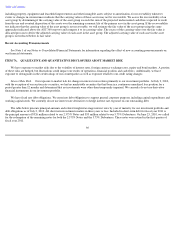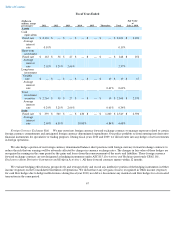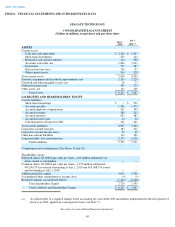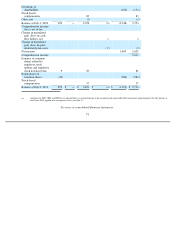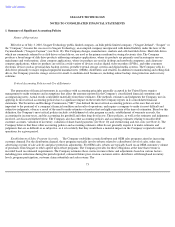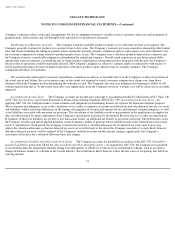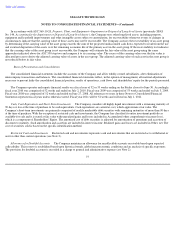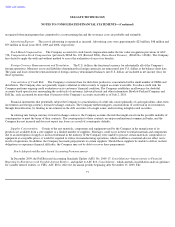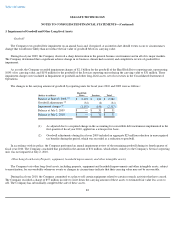Seagate 2009 Annual Report Download - page 78
Download and view the complete annual report
Please find page 78 of the 2009 Seagate annual report below. You can navigate through the pages in the report by either clicking on the pages listed below, or by using the keyword search tool below to find specific information within the annual report.
Table of Contents
SEAGATE TECHNOLOGY
NOTES TO CONSOLIDATED FINANCIAL STATEMENTS
1. Summary of Significant Accounting Policies
Nature of Operations
Effective as of July 3, 2010, Seagate Technology public limited company, an Irish public limited company, ("Seagate-
Ireland", "Seagate" or
the "Company") became the successor to Seagate Technology, an exempted company incorporated with limited liability under the laws of the
Cayman Islands ("Seagate-Cayman") (see Note 18). The Company designs, manufactures, markets and sells hard disk drives. Hard disk drives,
which are commonly referred to as disk drives or hard drives, are used as the primary medium for storing electronic data. The Company
produces a broad range of disk drive products addressing enterprise applications, where its products are primarily used in enterprise servers,
mainframes and workstations; client compute applications, where its products are used in desktop and notebook computers; and client non-
compute applications, where its products are used in a wide variety of devices such as digital video recorders (DVRs), and other consumer
electronic devices such as personal data backup systems, portable external storage systems and digital media systems. The Company sells its
disk drives primarily to major original equipment manufacturers (OEMs), distributors and retailers. In addition to manufacturing and selling disk
drives, the Company provides storage services for small- to medium-sized businesses, including online backup, data protection and recovery
solutions.
Critical Accounting Policies and Use of Estimates
The preparation of financial statements in accordance with accounting principles generally accepted in the United States requires
management to make estimates and assumptions that affect the amounts reported in the Company's consolidated financial statements and
accompanying notes. Actual results could differ materially from those estimates. The methods, estimates and judgments the Company uses in
applying its most critical accounting policies have a significant impact on the results the Company reports in its consolidated financial
statements. The Securities and Exchange Commission ("SEC") has defined the most critical accounting policies as the ones that are most
important to the portrayal of a company's financial condition and results of operations, and require a company to make its most difficult and
subjective judgments, often as a result of the need to make estimates of matters that are highly uncertain at the time of estimation. Based on this
definition, the Company's most critical policies include: establishment of sales program accruals, establishment of warranty accruals, the
accounting for income taxes, and the accounting for goodwill and other long-lived assets. These policies, as well as the estimates and judgments
involved, are discussed further below. The Company also has other accounting policies and accounting estimates relating to uncollectible
customer accounts, valuation of inventory, valuation of share-based payments (see Note 10) and restructuring and exit costs (see Note 4). The
Company believes that these other accounting policies and accounting estimates either do not generally require it to make estimates and
judgments that are as difficult or as subjective, or it is less likely that they would have a material impact on the Company's reported results of
operations for a given period.
Establishment of Sales Program Accruals. The Company establishes certain distributor and OEM sales programs aimed at increasing
customer demand. For the distribution channel, these programs typically involve rebates related to a distributor's level of sales, order size,
advertising or point of sale activity and price protection adjustments. For OEM sales, rebates are typically based on an OEM customer's volume
of purchases from Seagate or other agreed upon rebate programs. The Company provides for these obligations at the time that revenue is
recorded based on estimated requirements. The Company estimates these contra-revenue rebates and adjustments based on various factors,
including price reductions during the period reported, estimated future price erosion, customer orders, distributor sell-through and inventory
levels, program participation, customer claim submittals and sales returns. The
73


